
The theory and origin of classical dances of India or ‘Shastriya Devesh’ can be traced back to the Sanskrit text of Natya Shastra. The various forms of dance that come under the umbrella have their roots in Hindu religious musical theatres. The Sangeet Natak Academy recognises eight classical dance forms in India, namely, Bharatnatyam, Kathak, Kuchipudi, Kathakali, Odissi, Mohiniyattam, Manipuri and Satriya. Folk dance, on the other hand, is part of the indeginous tradition of a region. Performed during occassions, festivities, and ceremonies, the folk and classical dances of India exhibit the unique culture of India in its true essence.
India is replete with an ancient history that gave rise to the forms of classical and folk dances that are still performed today. Here, we dive into some of these classical dance forms that enrich our cultural practices.
Bharatanatyam

Bharatanatyam originated sometime around 1000 BC, in the ancient temples of Tamil Nadu. This elegant form of dance is performed by women, to the tunes of Carnatic music. Through the performance, the dancers showcase Hindu mythological themes and spiritual concepts, especially the teachings of Shaivism, Vaishnavism, and Shaktism. It is enriched with graceful hand gestures, limb movements, and facial expressions, all of which contrive a story. These gestures are called ‘Mudras‘. Bharatnatyam was a prevalent dance form which faced stringent oppression during the colonial period. Today, it is recognised as one of the most respectable art forms in India, kept alive despite all the repercussions. In the Southern region of the country, it is a matter of pride for a dancer to learn this renowned classical dance form.
Kathak
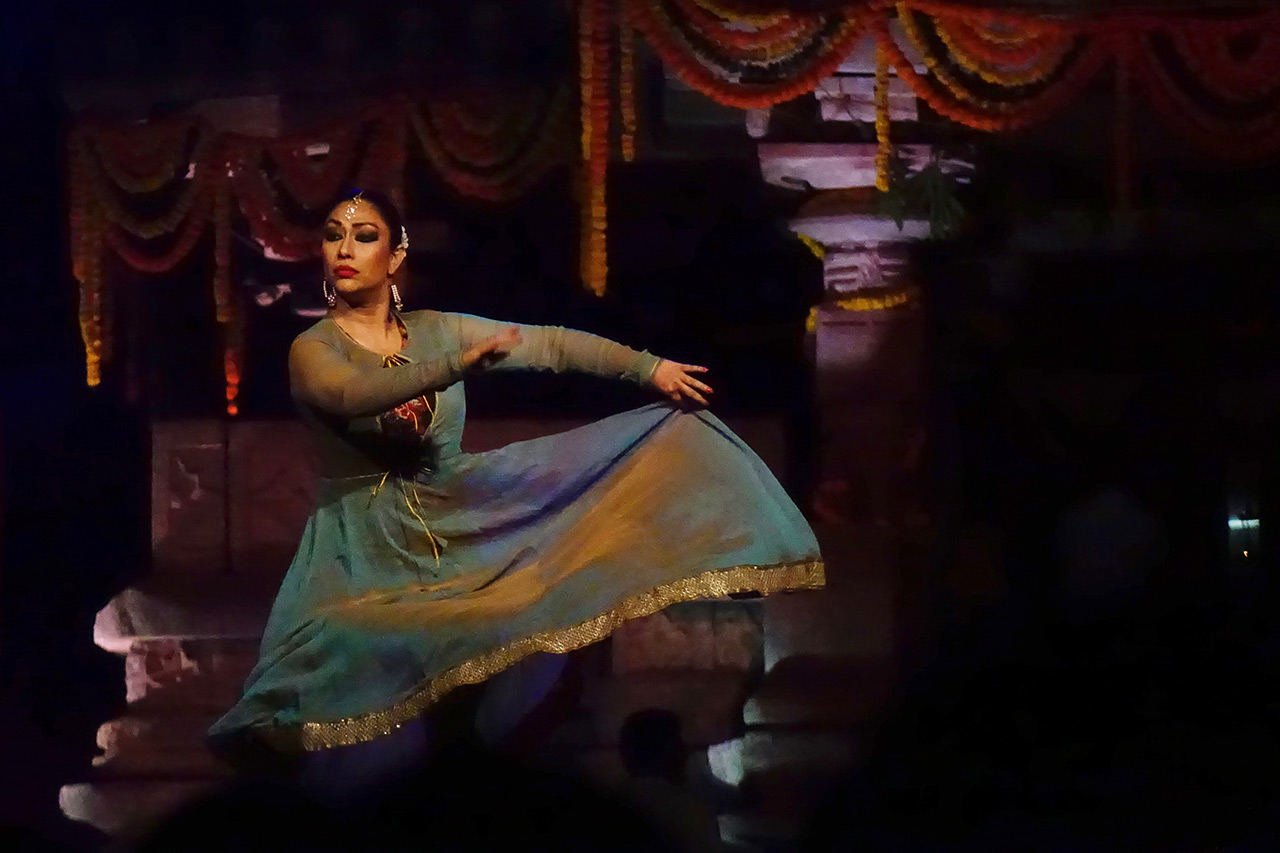
The name ‘Kathak’ is derived from the Hindi word ‘Katha’, meaning “story”. Originated in the northern region of India, from the state of Uttar Pradesh, the classical dance form of Kathak tells a story through the body movements of the performer. It is performed by both women and men, often together. At times referred to as the dance of love, Kathak emphasizes the movements of the ankle that fall in sync with the rhythm of the music. Ghungroos or ankle bells pose as indispensable accompaniments to the performer’s charm and are iconic to the dance. There are distinctions that can be witnessed in Kathak as it is performed in various places in the country, including its three gharanas: Jaipur, Benaras, and Lucknow.
Kathakali
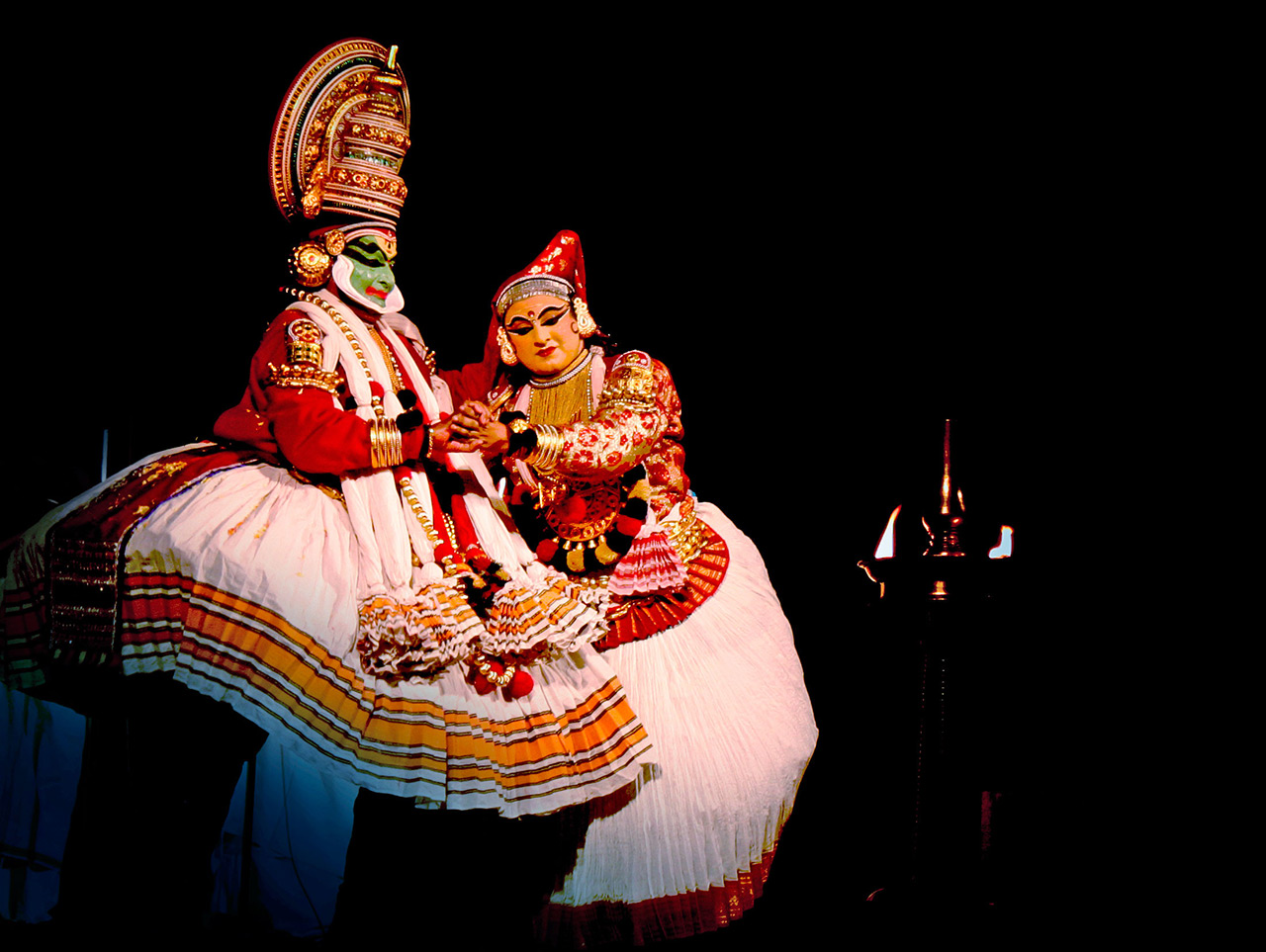
The dance form originating in Kerala, Kathakali, narrates mythological tales just through gestures and facial expressions. Kathakali, meaning ‘storyteller’, is a religious dance form of high esteem. It derives its movements from athletic traditions, religious drama and folk arts of the South. The stories that are embodied in the performances are mainly inspired by the epic of Ramayana and the mythological legends of Lord Shiva. The music includes only the vocals and is called Soppanam. Kathakali dancers are adorned in heavy, traditional costumes, ornate face masks and body paint. The makeup, or ‘Vesham’, is significant to the character being portrayed, and hence, is done with painstaking details.
Manipuri

The dance form of Manipuri represents the culture that thrives in the north-eastern state of Manipur. The dances narrate the popular ‘Raasleela’, which are stories of Radha and Krishna, deities of Hindu mythology. The performances are arranged as a team. Narrative chanting and the music of Indian classical instruments accompany the dance performances..
Kuchipudi
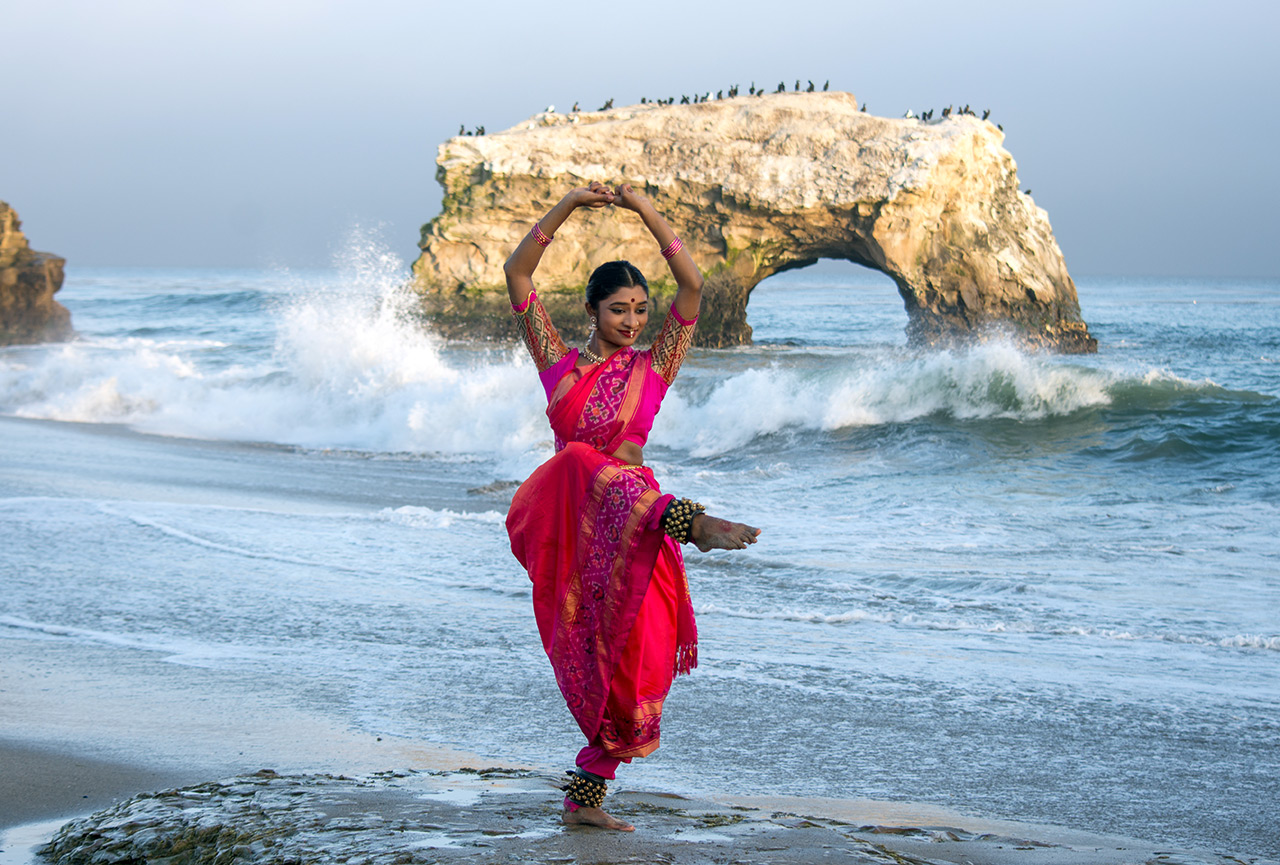
The performance of this classical dance form is regarded as a ritualistic procedure dedicated to God. Tracing its roots to the state of Andhra Pradesh, this difficult dance form demands dedication to master the skills. In the early years, Kuchipudi was only performed by the male dancers in the temples, specifically the upper caste Brahmins. Today, however, it is more prevalent among women.
Sattriya
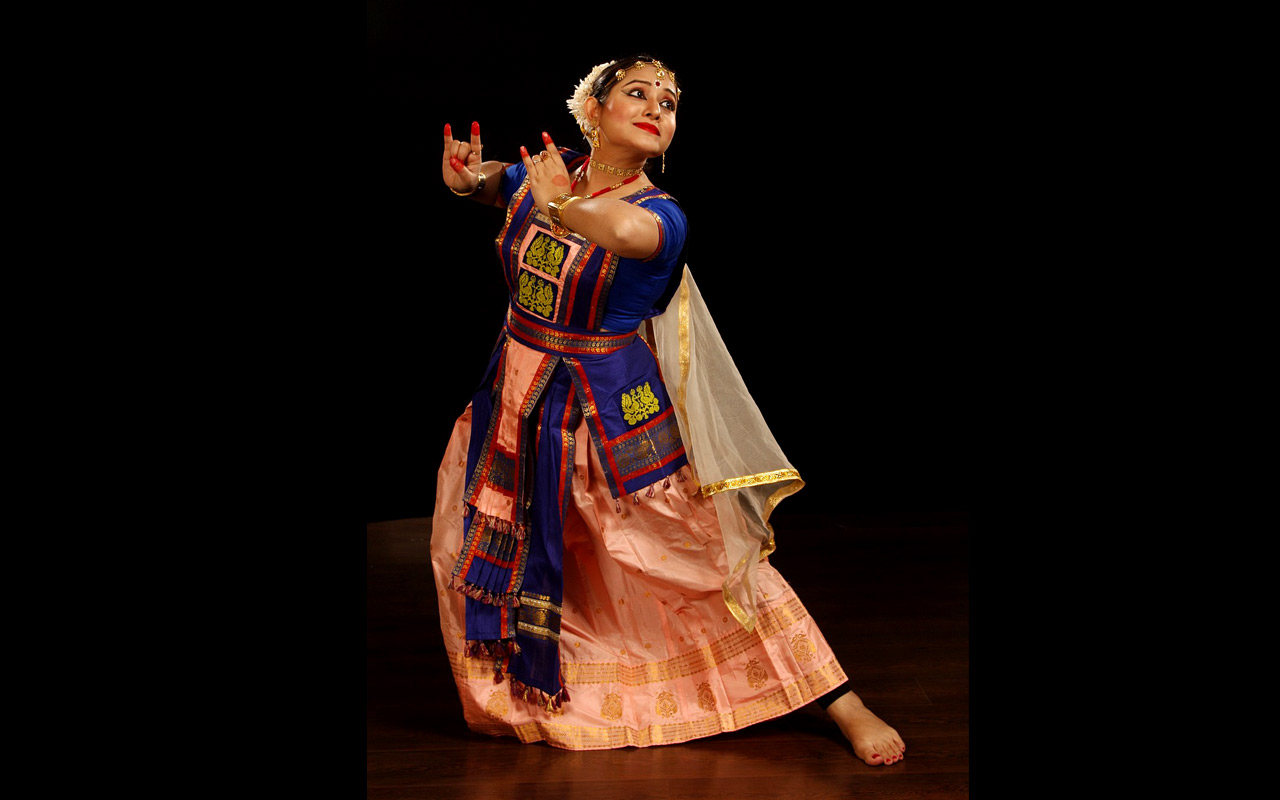
Mahapurusha Sankaradeva, a Bhakti saint and reformer of Assam, introduced the Sattriya dance form during the 15th century AD. This dance form was preserved in the Sattras or the Vaishnava Maths. It is an artistic way of imparting teachings through mythological themes, with a combination of dance, ballad and enactment. Today, the Sattras do not limit the themes and the performances. It includes the popular romantic tales of Radha-Krishna and Ram-Sita. It is one of the most graceful classical dances of India
Mohiniyattam

Mohiniyattam, the popular dance form of Kerala, has its roots in the ancient Sanskrit text of Natya Shastra. The word “Attam” in Malayalam means rhythmic motion, while Mohini is the only female avatar of Lord Vishnu. Thus, taking inspiration from the divine enchantress, the performance of Mohiniyattam showcases her dance. To the accompaniment of Carnatic music, singing and acting, the dance is traditionally performed by women. The recited song is composed in a language called Manipravalam, a hybrid of Sanskrit and Malayalam. The repertoire of instruments that produces the heavenly ragas and other melodies include the Mridangam, Madhalam, flute, Idakka, Veena, and Kuzhitalam.
Odissi

The traditional dance form of Odissi originated in the temples of Odisha. The sculptures of deities of ancient temples have inspired the gestures or Mudras of this intricate dance form that explore the mythological tales. The melody of the music accompanies the Hindi poetry recital, in this ancient dance form. Performed mostly by women, there are more than fifty forms of Mudras incorporated in the performance. It is one of the most melodious classical dances of India.
India has many other traditional dance forms below are some of the famous ones.
Bhangra/Gidda
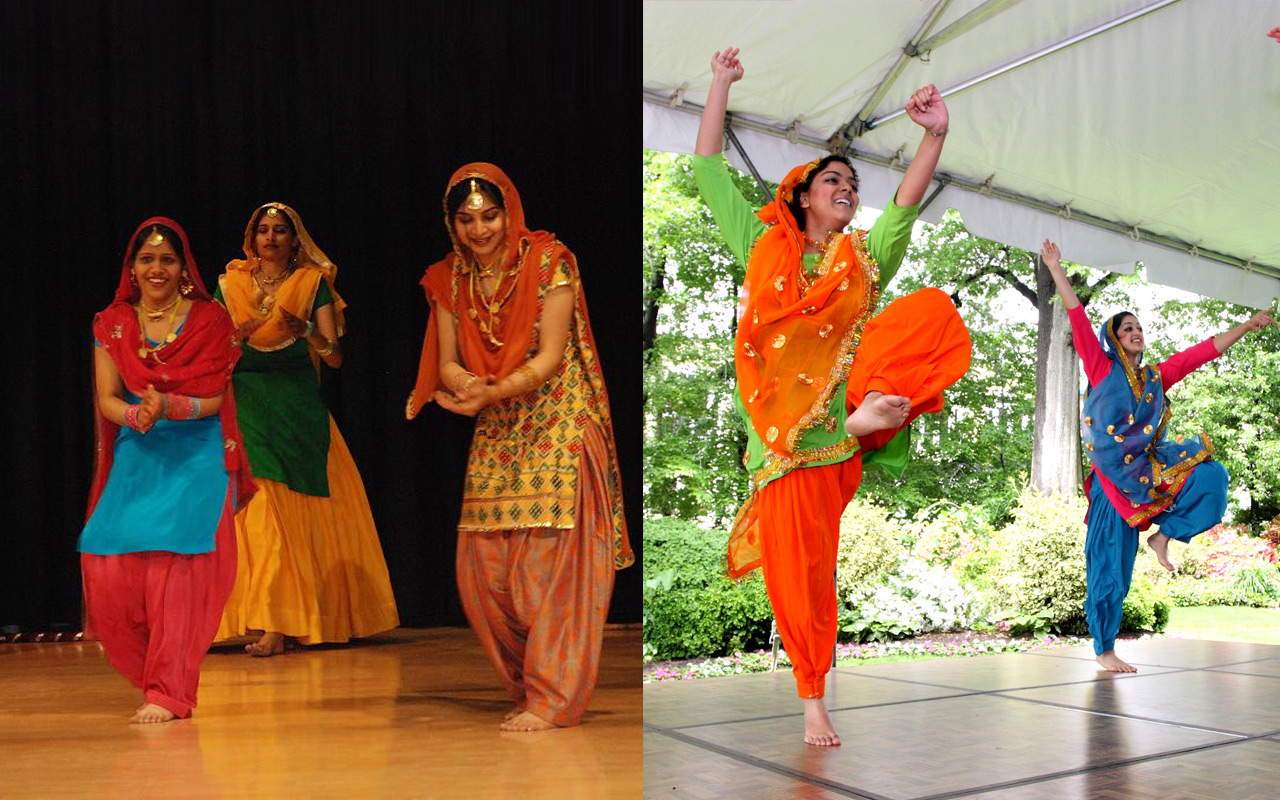
Bhangra belongs to the state of Punjab and is traditionally associated with the harvest festival of Baisakhi. It is an enthusiastic form of dance that is performed during ceremonies and occasions. The vibrancy of Bhangra dance and the beats of the dhol brings brilliant energy and gaiety to the celebrations.
Garba

Dance of colours and uplifting music, the Garba originated in Gujarat and is performed during the Navratri festival. It is performed in groups, mainly by women, who move around a statue of goddess Shakti. The pairs of sticks which the dancers use as props, exhibit the musical beats with a luminous spirit. Garba dancers wear traditional dresses of Gujarat called Chorno, and Chaniya Choli during the performances.
Lavani

Lavani boasts its origin in the state of Maharashtra, where it played a pivotal role in the upliftment of Marathi folk theatre. The name Lavani is derived from the word ‘Lavanya’ which means beauty. Lavani is a dance centered around female performers where the mythological tales are depicted against a repertoire of traditional Marathi music with the beats of Dholak. Two forms of Lavani are the philosophical Nirguni Lavani and the sensual Shringar Lavani. However, Padachi Lavani is performed in a theatrical setting with a large audience while Baithakichi Lavani is for a select audience of fewer numbers. The exciting and quick tempo paired with the powerful foot movements are characteristic of the Lavani dance form.
The themes and subjects of the performance revolve around religion, politics, society and romance. Dancers are dressed in the traditional nine-yard long saree of Maharashtra and adorned with gold jewelry. It is a sensual dance with erotic elements that serve to enhance the socio-political satire of the performance.
Ghoomar

Originally performed by the Bhil tribe to worship goddess Saraswati, the Ghoomar dance is an integral part of the Rajasthani culture. The performers adorn themselves in heavy jewellery and gorgeous dresses. The dance incorporates intricate circular or twirling movements, complemented with hand gestures.
Bihu

During the Rongali Bihu festival of Assam, young dancers perform a joyful folk dance. The Bihu dance combines rapid hand movements, quick steps and rhythmic swaying to present a brilliant performance of merry-making. It marks the beginning of the spring season, and through the Bihu dance, people take pride in the heritage and culture of Assam. The dancers wear traditional Assamese clothing along with beautiful accessories. The Dhol, Xutuli, Baanhi, Toka, and Gogona are the instruments which are used to bring to life the traditional tunes for the performance. The Bihu dance originated from the Bisu dance performed by communities of Upper Assam, like the Sonowal Kacharis, Deoris, Moran, and Borahis. This popular Indian Dance was performed at the London Olympics in 2012.
Chhau

Chhau dance is an iconic cultural art form of Mayurbhanj, Odisha. Dressed in elegant costumes of bright colors, contrasting designs, and face masks, the performers of Chhau incorporate martial arts into their dance.
Rouf

Performed by the women of Kashmir, Rouf is a light and cheerful form of dance. It is performed during occasions and ceremonies with soothing music and singing. The simple footwork that is characteristic of Rouf is called Chakri in the local language.
The folk and classical dance forms of India are diverse and each a gem on its own. The performers incorporate the style and nuances of the form to deliver a show that represents the culture in its full artistic essence. These classical dances of India are a pageant of the talent, skill, and the rich heritage that exists in the country.






super
Thanks Venkateshan 🙂